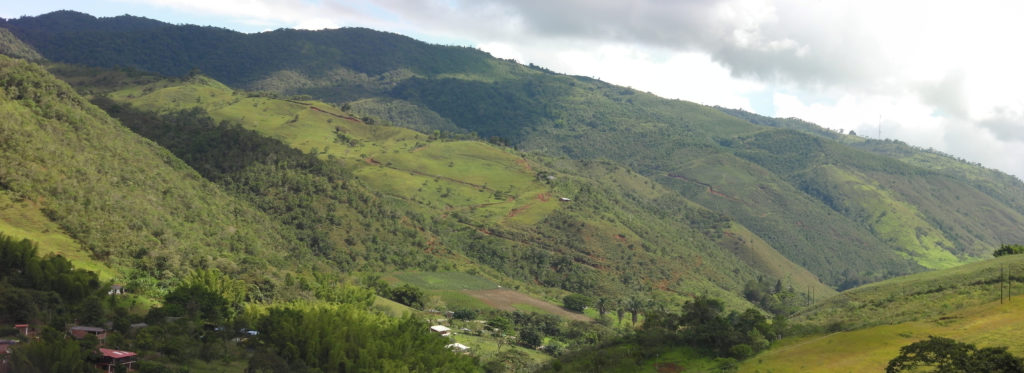Recently, we were surprised with the unexpected arrival of a swarm of bees that fluttered just six meters away from our main cabin, on the corner of the lot we selected for the chickens. I was preparing coffee for the final snack of the workday, an excellent moment to be entertained by conversations about a multitude of topics, when someone raised an alarm. Although we are used to the stable presence of bees during the bloom of the multiplicity of species that accompany the vegetation cover of the grasslands, and also to observing these movements within the limits of the farm, the flutter indicated that they wanted to settle on the site, taking into account the proximity of the night (4:30 pm). I saw the opportunity to leave a memory of this moment and ran to get my camcorder. Its excellent zoom would allow me to make the shot without much risk. A bit later, when everything had calmed down, I went out to observe the place of arrival again, being surprised by the formation they had made of a self-protective bag structure that hung on the very thin stem of a small cypress tree that my wife had planted there as an ornament for her garden. They stayed like that, in a state of latency and we wondered if we should do something so they leave the premises because it would be an issue since they were close to the birds and the constant transit of us and our old and insuperable Land Rover. Three days later on a sunny day, a very loud buzz began to pass over my head and my instinct for survival made me throw to the ground because I thought I was going to be attacked when they were leaving around 10 o’clock in the morning. Thousands of bees advanced erratically, exploring the field and suddenly, like an expert pilot, they descended the slope above the trees, making curves in the air adjusting to the sinuosities of the mountain. An unforgettable show.
The next day, my favorite bushes-weeds, those that activated the natural succession that allowed the arborization of my pastures, (Chilca, Baccharis sp) massively opened their flowers and hundreds of bees invaded them to enjoy their delicious nectar.
The feelings and tensions that I lived, of fear, of curiosity, of admiration for the beauty, organization and behavior of this endangered species, created a subject of study to improve our coexistence with them and satisfy my curiosity about their “natural” way of life; so I started asking questions to my workers that I would later expand to beekeepers and internet consultation. I remembered the great Edgar Morin for his dual conception of nature: mother and stepmother at the same time and although we have never had problems with them, it is better that they make their hive away from our cabins, or they might cause some tragedy in response to an involuntary provocation.
While I learn more about this species in their “natural” state, without worrying about turning them into a profitable activity, I share with you, my friends of the web, the images that I could capture of this moment.
José Otocar Reina B.
